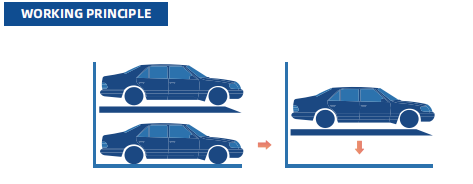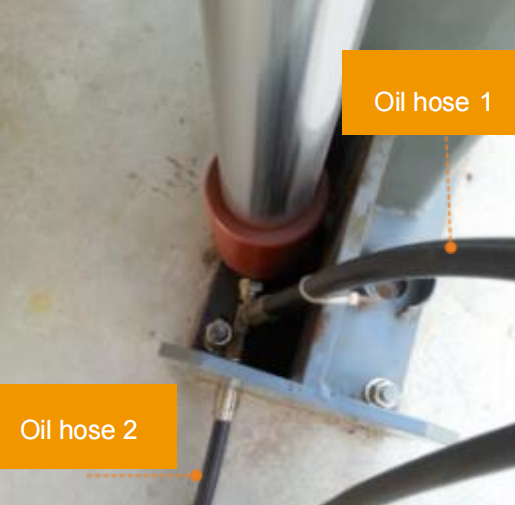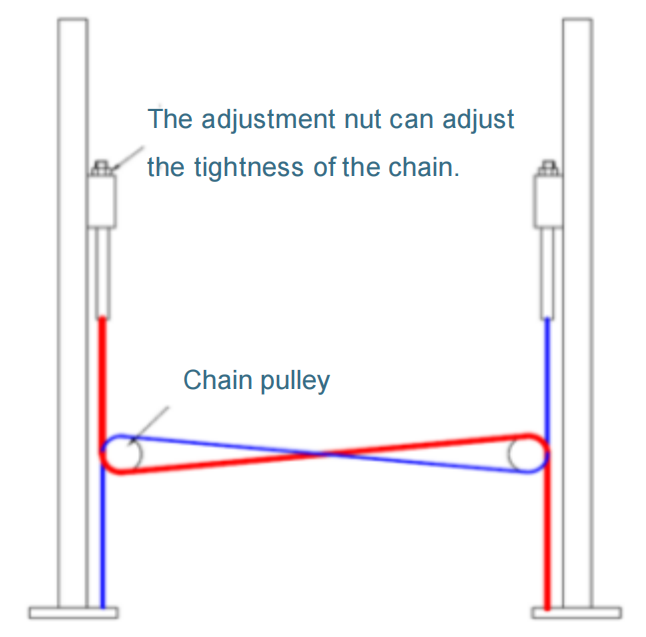Car lifts are powerful and essential machines that make vehicle maintenance and parking much easier. A two-post hydraulic car parking lift, such as the Standard Park ON-7232P, uses advanced mechanical and hydraulic systems to lift one car safely so another vehicle can be parked below. This simple yet intelligent design helps maximize limited parking spaces while maintaining full safety for both vehicles and operators.
In this guide, we’ll explore how these lifts actually work, their key components, how they lift cars step by step, and what maintenance or safety measures should always be followed.
Understanding the Basic Function
A car lift operates on a simple principle: it raises one car vertically to create additional space underneath. The lift consists of two tall steel posts with a platform (sometimes called a wave plate) that moves up and down between them. The platform is designed to carry the weight of the car evenly, while the posts provide structural support.
The lift uses hydraulic pressure and an electric motor to generate the force required to raise heavy vehicles. This system allows even small motors to lift several tons of weight smoothly. By pressing a single button, oil pressure inside the hydraulic cylinder pushes the lift upward, while built-in safety locks ensure the platform stays secure at the chosen height.
Main Components and Their Functions

Two posts – the tall columns on each side that hold everything up.
Platform (wave plate) – the flat part the car drives onto.
Carriages – the parts that move up and down inside the posts and carry the platform.
Hydraulic cylinder & hoses – these push the lift up using oil pressure.
Power pack (motor + pump) – the engine of the lift that moves the oil.
Chains & pulleys – help the platform move smoothly and stay balanced.
Locking device (mechanical lock + electromagnet) – keeps the platform safe when it’s up.
Limit switch & photocell sensor – tell the lift when to stop or if something is under it.
Control arm / button box – where you press buttons to lift or lower the platform.
How a Car Lift Works Step by Step

Operating a two-post car lift is straightforward once you understand the sequence. First, the vehicle is driven carefully onto the platform and positioned right at the center. Balancing the car is crucial, as it ensures even weight distribution and stable lifting.

Once the car is correctly positioned, the operator turns on the main power supply and activates the control box. By pressing the UP button, the electric motor starts the hydraulic pump, pushing oil through hoses into the hydraulic cylinder. The pressurized oil moves the pistons inside the cylinder, which in turn lift the carriages. As these carriages rise, they carry the platform and the car upward.

To keep both sides of the lift level, chains and pulleys synchronize movement between the two posts. When the lift reaches the desired height, mechanical locks automatically engage, securing the platform firmly in place. This means that even if the power supply is interrupted, the lift will stay locked and stable.
To bring the vehicle back down, the operator simply releases the lock — often controlled by an electromagnet and holds the DOWN button. The hydraulic fluid is allowed to flow back into the reservoir, lowering the platform smoothly and safely until it returns to the ground.
Capacity and Key Specifications
A standard two-post hydraulic parking lift like the ON-7232P can carry up to 3.2 tons (3,200 kg), which equals about 7,055 pounds. This capacity makes it suitable for most sedans and SUVs. The maximum lifting height is approximately 2.1 meters, or 6 feet 10.7 inches, allowing enough clearance for another car to park below.
The lift itself weighs around 1,184 kg (2,610 pounds), showing how strong and stable its structure is. Understanding these specifications helps users choose the right lift for their space and ensures they never exceed safe operating limits.
Essential Safety Guidelines
Safety is the top priority when working with any hydraulic car lift. Only trained and authorized users should operate the lift. Before raising a vehicle, always check that the surrounding area is clear — no tools, objects, or people should be underneath or near the platform.
Never exceed the lift’s maximum weight capacity. Overloading can cause severe damage or even accidents. Always park the car in the center of the platform and drive forward rather than reversing onto it. Keep your hands, feet, and clothing away from moving parts during operation.
Avoid using the lift in wet or extremely damp environments, as moisture can damage the electrical components. The motor should always be properly grounded to prevent electric shocks. If you notice any unusual noises, oil leaks, or uneven movement, stop using the lift immediately and call a professional technician.
Never leave a vehicle lifted and unlocked without supervision. The safety lock should always be engaged once the platform reaches its final height.
Installation Basics
The concrete floor must be strong and flat. It should be at least 300 mm thick and cured 28 days.
The posts need to be vertical and spaced correctly. Measure carefully.
The power box and wiring must be installed by a professional electrician.
Place the power pack and control box where you can reach them easily.
Common problems & quick checks (simple fixes)
- Lift won’t go up: check the fuse, power cord, emergency stop button, or limit switch wiring.
- Platform tilts left or right: check chains balance and make sure the car is parked correctly.
- Slow or jerky movement: there might be air in the hydraulic lines — the manual shows how to bleed air (lift, lower, open the connector slightly to let air out).
- Oil leak: tighten or replace the hose connector or replace a damaged seal.
- Motor noisy or not working: check voltage, fuses, or if the motor burned out.
If you’re not sure, call a trained technician — don’t try complicated electrical or hydraulic repairs yourself.
Using the Lift Safely
Before every use, ensure the lift and its surroundings are clean and clear. Turn on the main power supply and the control box. Drive the car forward until its front tires gently touch the stopper. Once positioned, press and hold the UP button until the lift reaches your desired height. Wait for the mechanical locks to engage fully before parking another car beneath the platform.
When you’re ready to lower the vehicle, remove the car from underneath first. Then, press the DOWN button, release the locking system, and allow the platform to descend slowly.
At The End
A two-post hydraulic car lift is a remarkable combination of engineering precision and safety technology. It simplifies parking, maximizes space, and allows secure vehicle maintenance. By following safety rules, performing regular inspections, and understanding how the system works, you can ensure your lift operates efficiently for many years.
Treat your car lift like heavy machinery respect it, maintain it, and it will reward you with reliable service and long-lasting performance.
FAQs
1. How does a car lift work?
A car lift uses a hydraulic system powered by oil and a motor to raise a vehicle. The pressurized oil pushes pistons inside cylinders, lifting the platform and car upward.
2. What is a two-post car parking lift?
It’s a lift with two tall posts and a moving platform that raises one car so another can park underneath, saving space in garages or parking lots.
3. What powers a hydraulic car lift?
A hydraulic car lift runs on a power pack that includes an electric motor and a pump, which move hydraulic oil to create lifting force.
4. How much weight can the ON-7232P lift hold?
The ON-7232P two-post lift can safely hold up to 3.2 tons (3,200 kg), enough for most cars and SUVs.
5. What is the maximum lifting height?
This lift can raise a vehicle up to 2.1 meters (about 6 feet 10 inches), allowing space for another car below.
6. How do you lower a car on a hydraulic lift?
To lower the car, release the safety lock, press the DOWN button, and the platform will descend slowly under controlled oil pressure.
7. What safety features do car lifts have?
Car lifts use mechanical locks, electromagnets, limit switches, and sensors to ensure safe operation and prevent sudden drops.
8. What maintenance does a car lift need?
Regularly lubricate moving parts, check chains and bolts, change hydraulic oil every few months, and inspect sensors and safety locks.
9. What should you check before using a lift?
Make sure the area is clear, the car is centered, the platform is clean, and there are no oil leaks or loose bolts.
10. Can anyone install or operate a car lift?
No. Installation should be done by professionals, and only trained users should operate the lift following all safety guidelines.

